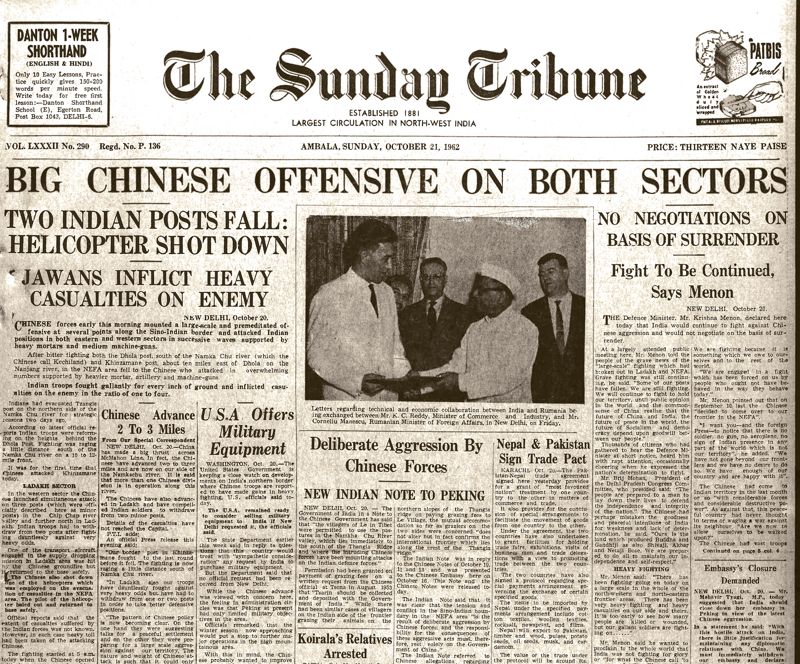Former President Hu Jintao walks past Chinese President Xi Jinping, right, and Premier Li Keqiang during the closing ceremony of the 20th National Congress of Chinas ruling Communist Party at the Great Hall of the People in Beijing, Saturday, Oct. 22, 2022. AP/PTI
Beijing, October 22
High drama ensued at the concluding session of the ruling Communist Party Congress here on Saturday as former president Hu Jintao was escorted out of the podium under the full glare of the media.
Hu, 79, sitting next to President Xi Jinping in the front row with other top leaders at the ornate Great Hall of People was persuaded to leave the meeting by two men, presumably security guards.
The incident happened just as the local and foreign media was ushered into the meeting attended by over 2,296 delegates and officials.
In over a minute-long video, which went viral on social media, Hu, who handed over the power to Xi in 2012 in a smooth transition after completing a 10-year tenure, appeared reluctant to depart as the security men kept persuading him to leave.
The frail-looking former president, who had a sheaf of papers in his hand, appeared talking to the two men much to the disquiet of the leaders, who sat through the whole episode motionless.
Finally, when he began walking, Hu was seen saying something to Xi who in return acknowledged nodding his head and patted Premier Li Keqiang. Then he began a long walk to the exit door accompanied by the two men. His exit was not explained.
Hu not only attended the opening ceremony of the Congress, but was also present throughout the session.
All Chinese Communist Party (CPC) meetings are held in extreme secrecy and it is indeed very rare for such an incident to take place.
The once-in-a-five-year Congress of the party which concluded its four-day session on Saturday is special in many respects as it cemented Xi’s status by amending the party’s Constitution to grant him more powers.
Xi, 69, will be completing his 10-year tenure this year.
All leaders before him, including Hu, retired after ten-year tenure.
The 20th Congress concluded its session by electing the powerful Central Committee comprising over 370 members.
The Committee will meet on Sunday to elect a 25-member Political Bureau which in turn would elect seven or more members to the Standing Committee.
The Standing Committee will elect the General Secretary.
Xi, the outgoing General Secretary of the party besides being President and head of the military, is widely expected to be endorsed for the post for a third five-year term.
ince the whole proceedings of the Congress are held under a blanket of secrecy, it is not clear how smooth the process of Xi’s endorsement will be.
Beijing and several parts of China witnessed rare protests with with banners hung on overpasses of major thoroughfares, protesting against Xi’s unpopular zero-COVID policy and authoritarian rule.
The banners were later removed by security officials.











































































